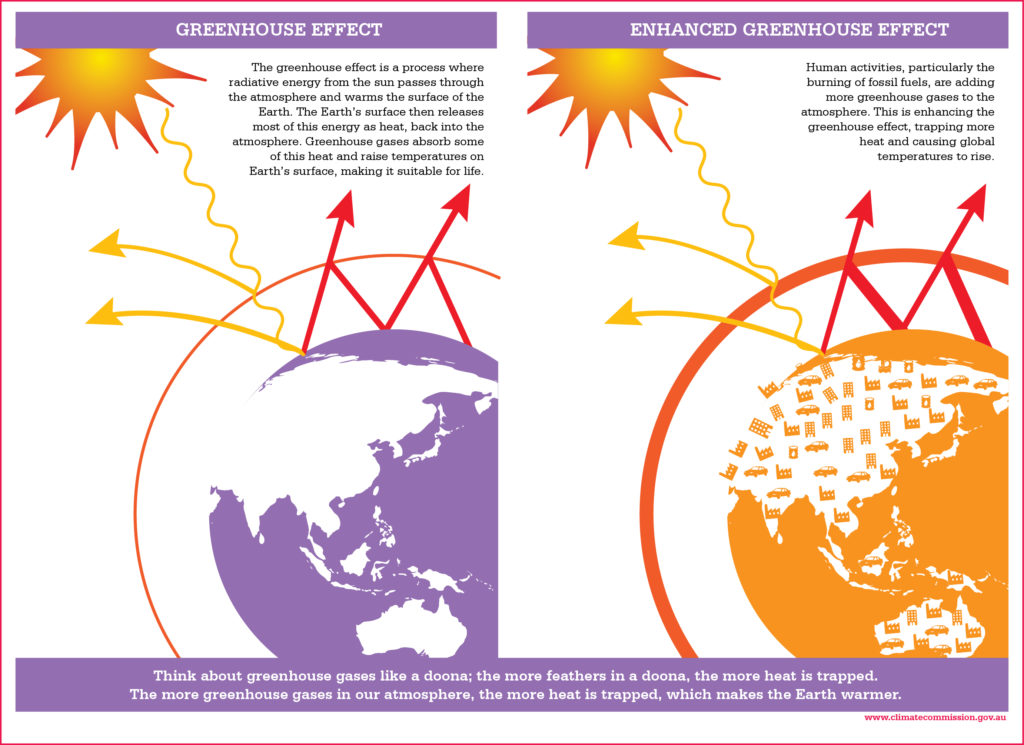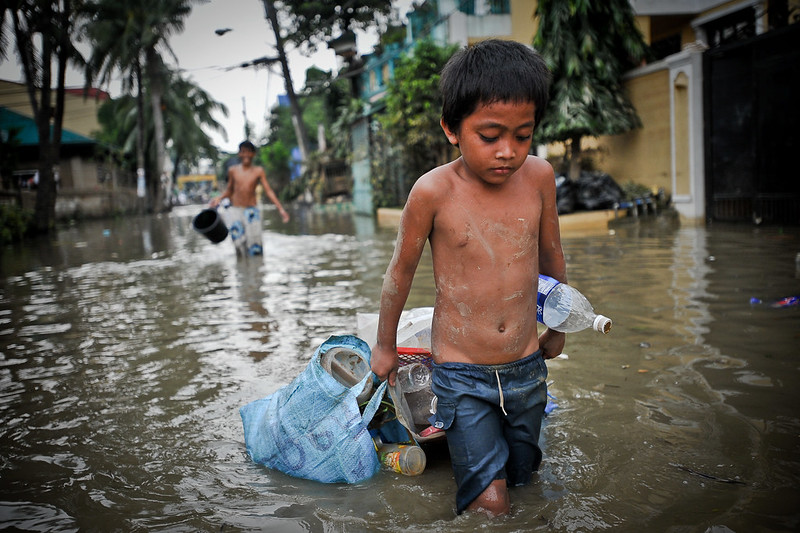Lenah Valley Primary School 3H

Hello hello Lenah Valley Grade 3s!
Thank you for your questions about climate change. You asked some really interesting questions about causes of climate change and the future.
You'll find answers to your questions from our climate experts below - have a read and watch their answers.
You can also have a look at what other classes across Tasmania asked this year, as well as our climate change toolkit.
Our Questions
On average, the global sea level is expected to rise by about 40 cm, nearly half a meter, by 2050. Of course, sea level rise depends on how much carbon dioxide emissions are released by humans. However, in 2050 there actually isn’t much difference between predictions of the best (RCP2.6) and worst (RCP8.5) case scenarios. It is not until after 2050 that their paths really diverge. That’s because it takes a lot longer for the ocean and ice on the planet to respond than the atmosphere.
Interestingly, the amount sea level rise will be quite different depending on where you are. In Sydney, for example we might expect .2 m by 2050, but in NYC it could be up to .45. This is because there is a lot more land in the northern hemisphere and all that land is very heavy. Its weight actually pulls water to the north via the force of gravity.
To calculate how much land that increase in sea level will flood, you also need to consider how far above sea level the coast line is. Over all, once you consider the shape the coastline around the world, we could be looking at 4.3 million acres underwater. That land contains the homes of 40-150 million people.
The how and the why of climate change are very tightly linked, so tightly linked people as far back as 1896 had figured out the basics of how it works. Earth’s atmosphere keeps the world warm by trapping heat. It does this in a way similar to the way a greenhouse works (thus the name “greenhouse effect”). Sunlight (and warmth) can come through the atmosphere in the day time and warms up the land and sea areas. At night cooling occurs, with the heat escaping into the atmosphere, some of that leaks out into space again, but not all because the atmosphere traps some of the heat. The key bit of the atmosphere that traps the heat are the greenhouse gases.

Natural greenhouse gases are water vapor, carbon dioxide, methane, ozone and nitrous oxide. These chemicals are an important part of the world’s natural cycles. They cycle between the atmosphere, the ocean, soils and rocks. Human activities have changed those cycles, meaning more greenhouse gases have entered the atmosphere, trapping more heat and leading to global warming and climate change.
Many human activities influence climate relevant cycles, but two of the most important are to do with carbon dioxide and methane. Fossil fuels contain carbon dioxide locked up millions of years ago, by bringing it to the surface and burning the fossil fuels human activity short circuits natural weathering and other cycles, creating one of the major sources of the excess carbon dioxide that is creating climate change.
Agriculture is also a major contributor to climate change, producing about a quarter of all current greenhouse gas emissions. These emissions come from the fuels used by farmers, but also because of emissions from rice paddies and livestock, which produce methane. A particularly powerful greenhouse gas, over a 20-year period methane is 80 times more potent at warming than carbon dioxide. On top of this, the removal of native vegetation, like forests, to create space for agriculture reduces the amount of carbon drawn out of the atmosphere and stored in trunks and roots as trees grow (known as sequestration).
As you can see there are many interconnected ways that human activities are influencing the biogeochemical cycles of Earth and thereby contributing to climate change.
Good sources of climate information are https://climate.nasa.gov/ and the new IPCC climate atlas https://interactive-atlas.ipcc.ch/
Two good Australian information sources are the CSIRO https://www.csiro.au/en/research/environmental-impacts/climate-change/Climate-change-QA and the Academy of Science https://www.science.org.au/education/immunisation-climate-change-genetic-modification/science-climate-change
You might also like to play with the simple climate model at en-Roads, explore options for reducing climate change https://en-roads.climateinteractive.org/scenario.html?v=21.10.0
That’s a great question and a tricky one to answer accurately, because it depends a lot on how we humans adapt and respond to change. We can be certain that things will be different, though. It’s likely there will be a lot more extreme weather events – droughts, floods, bushfires, cyclones, and storms. In some place the seas will have risen to flood homes and areas that are now dry land. Some species will suffer and go extinct as environmental conditions become unsuitable for them. Other species will thrive as conditions begin suit them better, their populations might grow, or they might start to live in places that were previously too difficult for them.
What life will be like for us is pretty uncertain, but here are some things I hope will change as humans adapt to a changing climate. People will share more with their communities – food, skills, transport (probably not cars as we know them!). Vegetable gardens and fruit trees will replace lawns in many homes. Building design will prepare for floods, fires, and storms. We will consume and waste less, recognising that the food and resources we take from the oceans and land are limited. Wealthier people and countries will share with less wealthy people and countries, to make sure everyone has the best chance of adapting to change. Governments will plan well for change and for unpredictable things like extreme weather events and pandemics, making decisions to help everyone and our natural environments.
Climate change and its causes will affect your generation in many different ways, in Australia and elsewhere. These include rising average temperatures, more frequent and severe storms, floods and bushfires, and extinction of plants and animals. The loss of topsoil from drought, flood and wind and unpredictable weather will affect farming and could cause more frequent and severe famines. This could lead to increasing political tensions in some countries around access to resources. People and governments will need to spend more money on safety and preparedness. These impacts are all related to one another.

A lot of produce will become more expensive as environments change. This includes coffee and honey, and even some vegetables, fruits and meat. Campfires, burn-offs and open-flame barbeques would be restricted for longer parts of the year as fire bans become increasingly common. Take the example of the 2020 bushfires. More than 3 billion animals were impacted, forests were damaged or destroyed, and human tragedies included loss of life, health, homes and livelihoods. Crises like this would be repeated in increasingly worse fire seasons, meaning bigger and bigger expenses for fire preparedness. Taking action on climate change will not stop these impacts entirely, but it can reduce them.
Climate change and its causes impact more than the natural environment. They have knock-on impacts in health. Air, water and soil pollution will continue to cause health conditions and worsen existing ones like cardiovascular and respiratory diseases as well as cancers. While these outcomes are less common in Australia, they happen here too. People in poorer communities with fewer support structures are impacted most. Your generation will see these impacts in your lifetimes. In fact, you already have. Increased exposure to new infectious diseases in the environment has also been linked with climate change, meaning epidemics and pandemics may be a thing of the future and not just the present.
While these impacts cannot be stopped completely, there is so much that can be done to avoid the worst of it. If we rapidly reduce the greenhouse gas we emit, we can improve the future for your generation and the generations who follow you. Action on climate change now will play an important part in your future quality of life, and in the lives of many others around the world in your lifetime.













